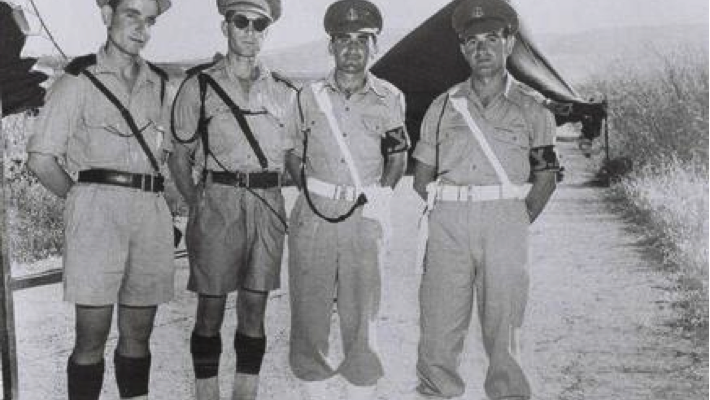On July 20, 1949, the Syrian-Israeli Armistice was signed. Syria was the last of the Arab countries that had attacked the newly established State of Israel to sign an armistice agreement.
Israel’s War of Independence ended with the signing of armistice agreements between the newly established Jewish state and four Arab states in 1949. Separate agreements were signed with Egypt (February 24), Lebanon (March 23), Jordan (April 3) and Syria (July 20). However, peace treaties were not signed between Israel and these Arab countries. No official negotiations took place with the Palestinian Arabs. No international borders were fixed or recognized between Arab states and Israel. The United Nations and its chief negotiator, Ralph Bunche, mediated the armistice negotiations.
Talks between Israel and Syria did not begin until April 5, 1949, after all other armistice agreements had been signed. Discussions were protracted because the two countries were initially unable to agree on a number of basic issues, including the withdrawal of Syrian troops from areas that had been allocated to Israel in the 1947 UN Partition Plan. The armistice agreement created three demilitarized zones (DMZs) in those disputed areas. According to the agreement, the DMZs were to be areas “from which the armed forces of both Parties shall be totally excluded, and in which no activities by military or para-military forces shall be permitted.”
In addition to the DMZs, a buffer area was created in which UN troops were stationed as truce observers. Dispute over the nature of the DMZs continued until 1967, when Israel won the Six Day War and captured the Golan Heights. Because the areas had been allotted to Israel in the 1947 UN Partition Plan, Israel believed that the areas fell under Israeli sovereignty. Because of the armistice agreement, Syria believed that even civilian activities there needed to be approved by the Mixed Armistice Committee. As a result, Israeli agricultural activity in the DMZs continued under shelling from Syrian forces stationed on the Golan Heights. This resulted in ongoing skirmishes between the two countries. Tension from Syrian shelling of Israeli settlements contributed to Israel’s attack on the Golan Heights in the June 1967 war. Efforts to reach Syrian-Israeli agreements in the 1990s and 2000s were plagued by questions about the armistice lines, the size of the demilitarized zones, and degrees of withdrawal.
The situation today vis-a-vis Syria’s threat to Israel is muddled as a result of the ongoing bloody civil war. The fighting throughout Syria has created new instability on Israel’s northern border, eliminated any hope of any near term peace agreement relating to the Golan Heights and increased the prospect of an even more dangerous radical Islamist regime coming to power.
By: Center for Israel Education, Jerusalem Virtual Library and United with Israel Staff
